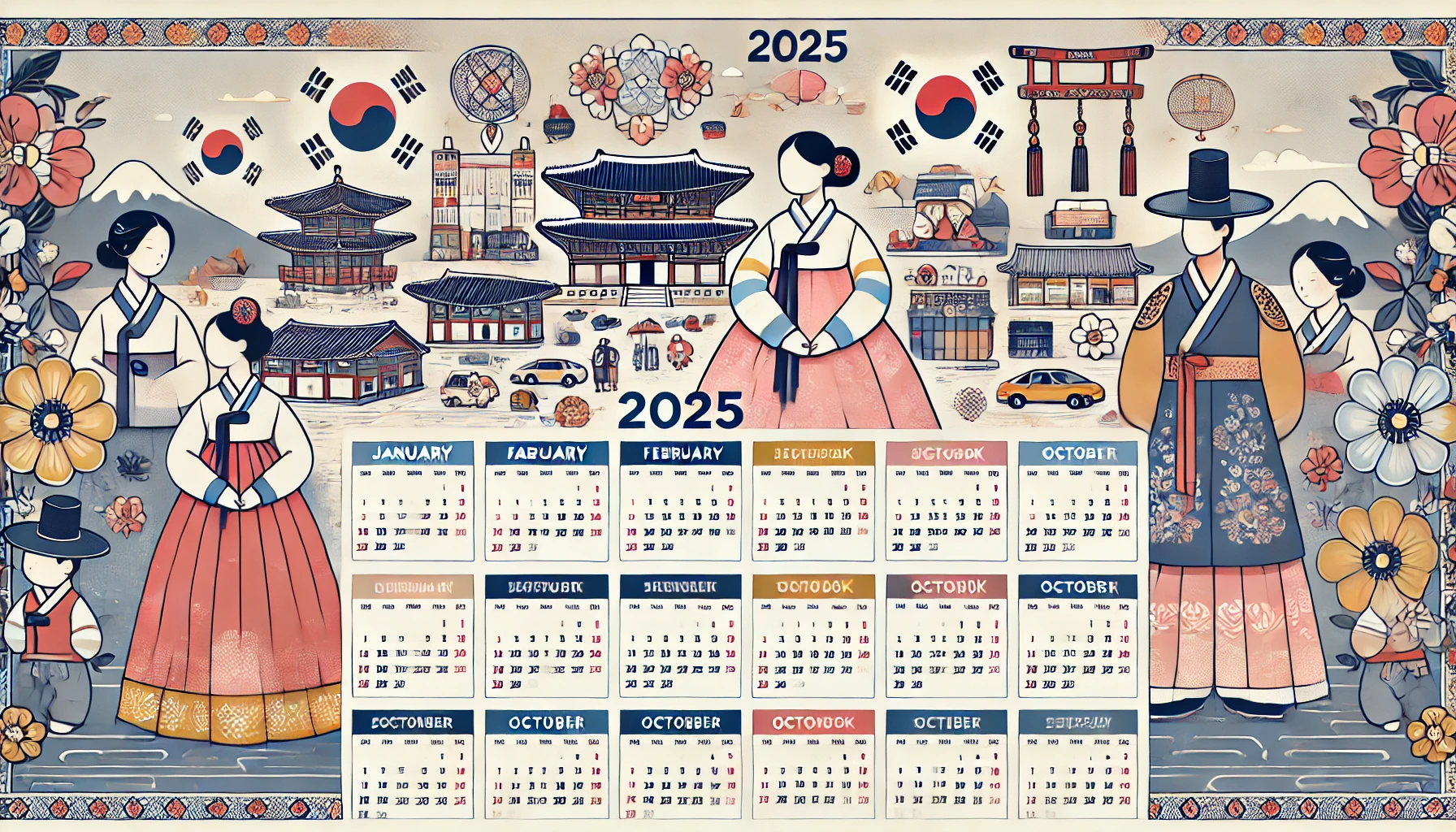Korean holidays, known as 명절 (myeongjeol), are deeply rooted in tradition and play a vital role in connecting families, honoring ancestors, and celebrating seasonal changes. For anyone interested in Korean culture, understanding these holidays provides a glimpse into the country's customs and values. Here is an introduction to some of the most important traditional holidays in Korea.

🍀 Seollal 설날 (Lunar New Year)
Seollal is one of the most significant holidays in Korea, celebrated on the first day of the lunar calendar. It marks the start of a new year and is a time for families to come together to pay respects to their ancestors through a ritual called charye. During charye, families prepare a table of traditional foods and offer them in honor of their ancestors.
The holiday typically lasts for three days, allowing people to travel and spend time with family. One of the highlights of Seollal is Sebae, a formal bow performed by younger family members to their elders, wishing them good health and prosperity for the year. In return, the elders give sebae don (New Year's money) to the younger generation.
Traditional foods eaten during Seollal include tteokguk, a soup made with sliced rice cakes. Eating tteokguk symbolizes growing a year older. Families also enjoy playing traditional games such as yutnori, a board game that brings everyone together for fun and laughter.
🍀 Chuseok 추석 (Korean Harvest Festival)
Often referred to as the Korean equivalent of Thanksgiving, Chuseok is another major holiday celebrated on the 15th day of the eighth month of the lunar calendar. It is a time to give thanks for a bountiful harvest and to honor ancestors through rituals similar to those performed during Seollal.
During Chuseok, Koreans visit their hometowns to spend time with family and participate in seongmyo, the practice of visiting and cleaning the graves of ancestors. Beolcho is a ritual where families tend to their ancestors' graves by cutting weeds and clearing the area, showing respect and gratitude for the deceased.
Traditional foods are a big part of Chuseok, with songpyeon being one of the most iconic dishes. Songpyeon are half-moon shaped rice cakes filled with sweet fillings such as sesame seeds, red beans, or chestnuts. These rice cakes are steamed over pine needles, giving them a fragrant aroma. Families often gather to make songpyeon together, as it's believed that whoever makes the prettiest rice cake will have good luck.
🍀 Dano 단오 (Spring Festival)
Dano, celebrated on the fifth day of the fifth lunar month, is one of Korea’s oldest traditional holidays. It was originally a day to celebrate the end of the sowing season and pray for a good harvest. Although not as widely observed today as Seollal or Chuseok, Dano is still recognized for its cultural and historical significance.
Traditional activities during Dano include washing hair with changpo (sweet flag) water to ward off evil spirits and ensure health. In some regions, people participate in ssireum (traditional Korean wrestling) competitions, while women may swing on traditional geune swings as part of the celebration.
Dano is also a time for enjoying special foods like surichwi tteok, a rice cake made with a medicinal herb called surichwi, which is believed to have health benefits. In the past, people also wore special clothing, such as danogot, brightly colored hanbok worn specifically for this holiday.
🍀 Hansik 한식 (Cold Food Festival)
Hansik, celebrated on the 105th day after the winter solstice (around early April), is a day when Koreans traditionally eat cold food. The origin of Hansik is tied to ancestral rites, as it is a time to visit the graves of family members and tend to their burial sites, much like during Chuseok.
Because fire was forbidden on Hansik, families would prepare food ahead of time to eat cold. Though this tradition is not as strictly followed today, Hansik remains an important day for honoring ancestors.
🍀 Daeboreum 대보름 (First Full Moon of the Lunar Year)
Daeboreum is celebrated on the first full moon of the lunar calendar, which is typically in February. The holiday is centered around traditional customs meant to bring good fortune, health, and protection in the coming year.
One of the most common traditions during Daeboreum is bureom, where people crack and eat nuts like walnuts, chestnuts, and peanuts to ensure strong teeth and overall health for the year. Koreans also participate in a practice called daljip taeugi, where large bonfires are lit to symbolize the burning away of bad luck from the previous year.
A special food eaten during Daeboreum is ogokbap, a five-grain rice dish made with rice, barley, millet, beans, and red beans. It is often eaten with various seasoned greens called namul. Sharing ogokbap with neighbors is believed to bring good fortune.
🍀 Gaecheonjeol 개천절 (National Foundation Day)
While Gaecheonjeol is a more modern holiday, it still holds great significance in Korean culture. Celebrated on October 3rd, it marks the founding of the Korean nation in 2333 BCE by Dangun, the legendary founder of Korea. According to Korean mythology, Dangun was the son of a god and a bear-turned-woman, and he established the first Korean kingdom, Gojoseon.
Gaecheonjeol is a national holiday, and many people celebrate by attending ceremonies or visiting historical sites tied to Korean heritage.
Conclusion
Korean holidays are more than just days off; they are a time for family, tradition, and reflection. From the new beginnings celebrated during Seollal to the gratitude and ancestor worship of Chuseok, these holidays offer a deeper understanding of Korean culture and values. Each celebration has its own unique customs, foods, and rituals, making them a fascinating aspect of Korea's rich cultural tapestry.